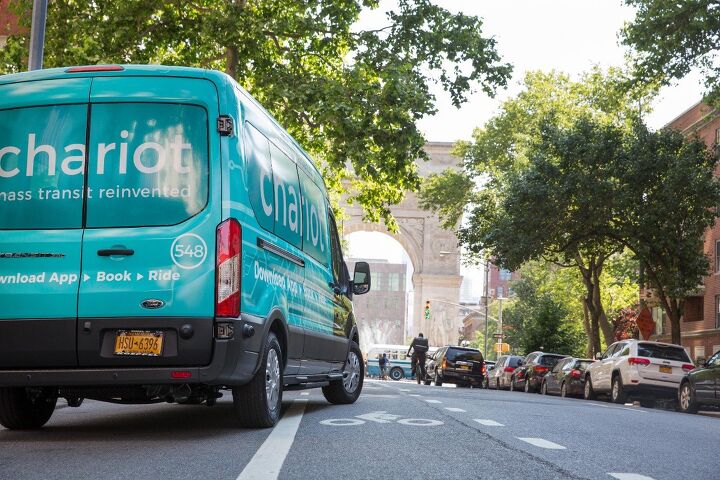#FordSmartMobility
Ford Triples Down on Mobility, Acquires Two Tech Firms
While mobility has placed the automotive industry in a state of minor limbo, manufacturers achieving a major breakthrough may yet ascend to heaven — financially speaking. Ford has promised to deliver robot-driven taxis within a couple of years and expended quite a bit of cash to get there since acquiring Argo AI in 2017. However its autonomous arm, Ford Smart Mobility, has only encountered mixed success. Progress in terms of self-driving has been incremental, with the company shuttering some of the side businesses that explored alternative revenue streams (e.g. Chariot) and losing millions though its software investments.
Disinterested with failure, Ford partnered with Volkswagen Group earlier this year. As part of the deal, VW agreed to dump another 2.6 billion into Argo in hopes that it would accelerate development. Ford said it would be taking things a step further on Tuesday and announced the acquisition of two more tech companies.
Ford's Chariot Program Didn't Last Very Long
Chariot, Ford’s app-based shuttle service, has announced it will throw in the towel due to the rapidly changing “mobility landscape” of major cities. When the company launched in 2014 with Jim Hackett at the helm, it joined a bundle of “microtransit” firms hoping to undercut brands like Uber while providing a viable alternative to public transportation.
Ford acquired the company in March of 2016 for a reported $65 million, proving that not every mobility firm can be a golden goose. It snagged Hackett and made him Ford CEO roughly a year later, where he continued to oversee Chariot as chairman of the automaker’s Smart Mobility subsidiary. Unfortunately, the service is no longer deemed sustainable.
On the upside of things, this ought to put a few coins in the jar labeled “Restructuring Program” at Ford’s Dearborn headquarters.
Ford Motor Company Loses VP and Brand Officer, First Mobility CEO
There’s two departures occuring at Ford Motor Company for anyone thinking of advancing their career. The automaker announced late Wednesday that Musa Tariq, vice president of the company and Ford’s chief brand officer, is leaving the automaker, effective this week. Joining him is Raj Rao, CEO of Ford Smart Mobility, who takes his leave on the 1st of May.
The mobility division was created in 2016 by former Ford CEO Mark Fields, with Rao serving as its CEO. The subsidiary’s chairman, Jim Hackett, now has a pretty good idea of what Fields’ job entailed. Tariq joined the company in January 2017.
No reason was given for either of the two departures, but the personnel loss leaves Ford with some very important roles to fill.
Ford's Rao to Ride-Sharing Firms: Our Service Centers Are Waiting; Come and Get It
Ford Motor Company may soon press dealership service centers to prioritize maintenance and repairs for ride-sharing fleets and their employees. This comes after the company’s decision to expand its in-house shuttling firm, known as Chariot, and as its long-term plan to bring an autonomous ride-sharing solution to market by 2021 takes shape. But Ford also knows rival companies can be a strong source of revenue. Omnicraft, anyone?
Even moderately sized cities have several thousand Uber and Lyft drivers, and Ford’s CEO of Smart Mobility Raj Rao thinks they represent an untapped resource. He believes service centers should go the extra mile for them, even if it means some dealerships have to stay open 24 hours to provide swift turnarounds.



















Recent Comments